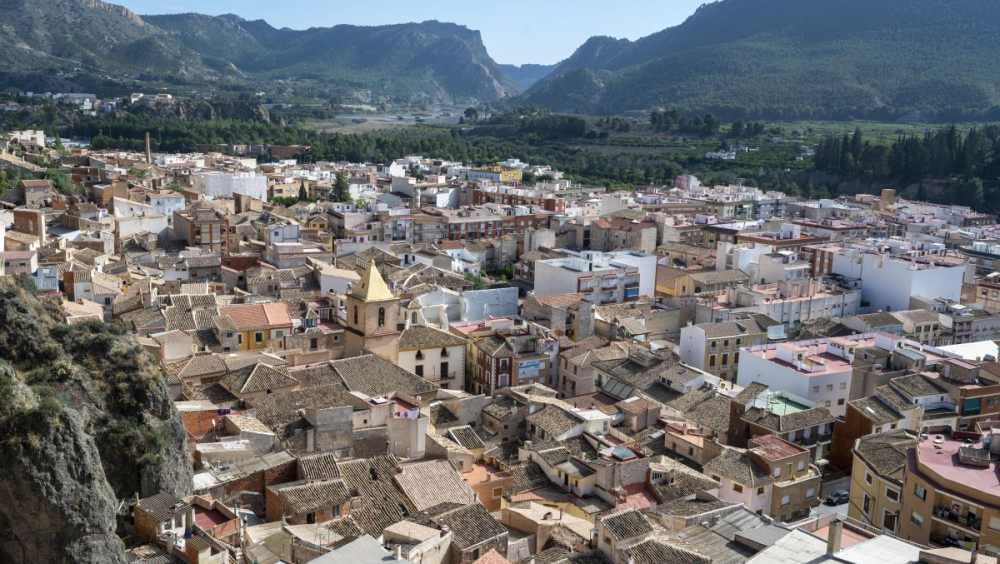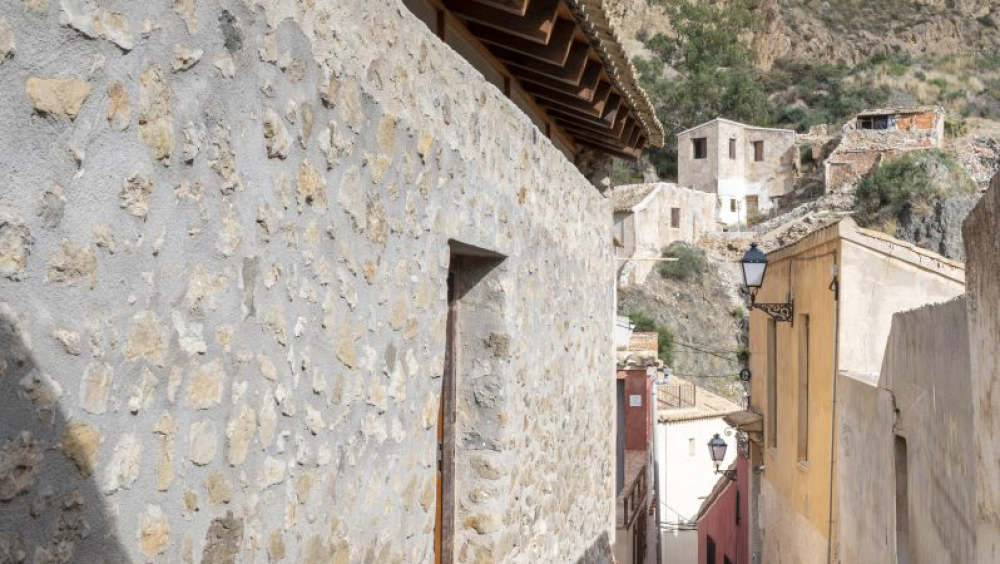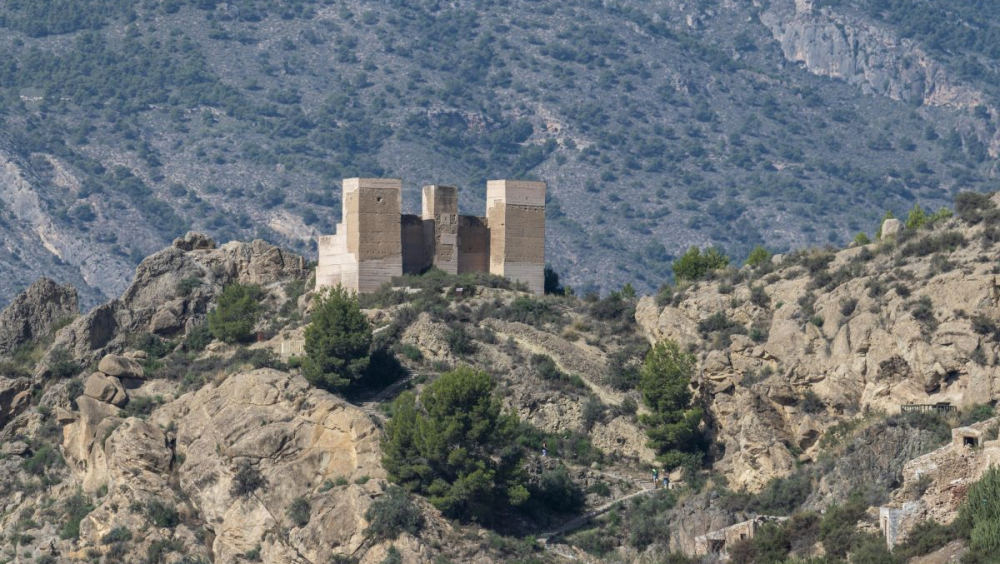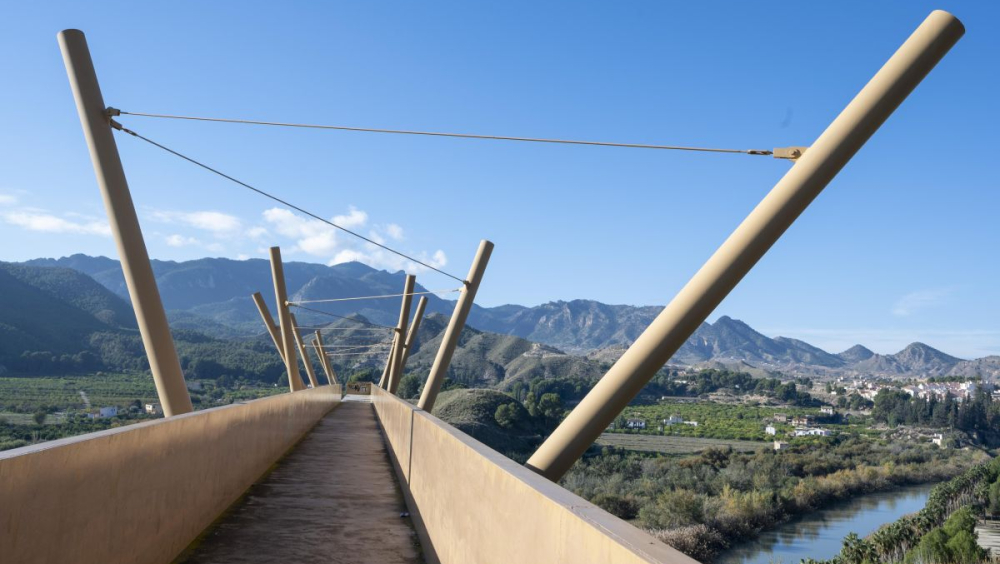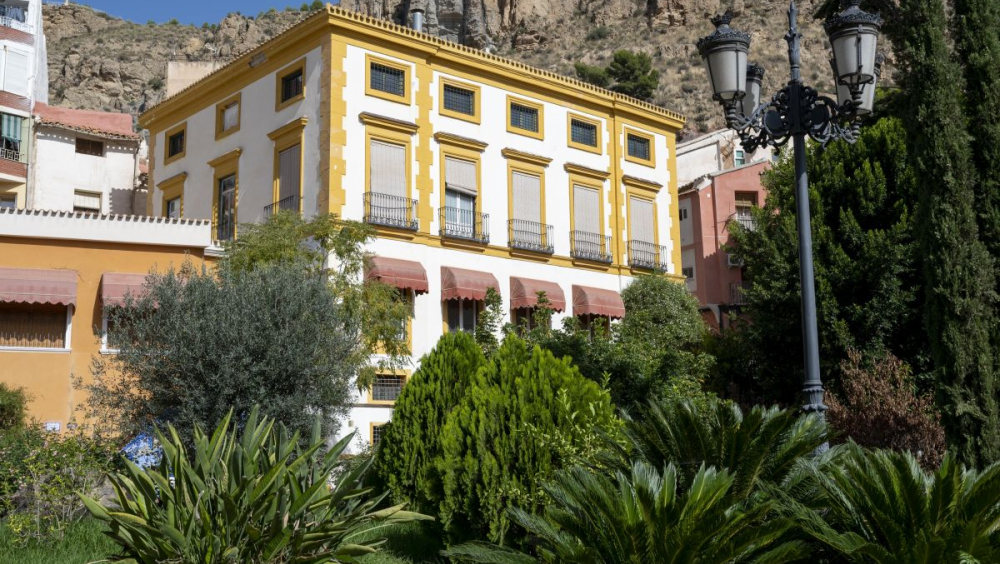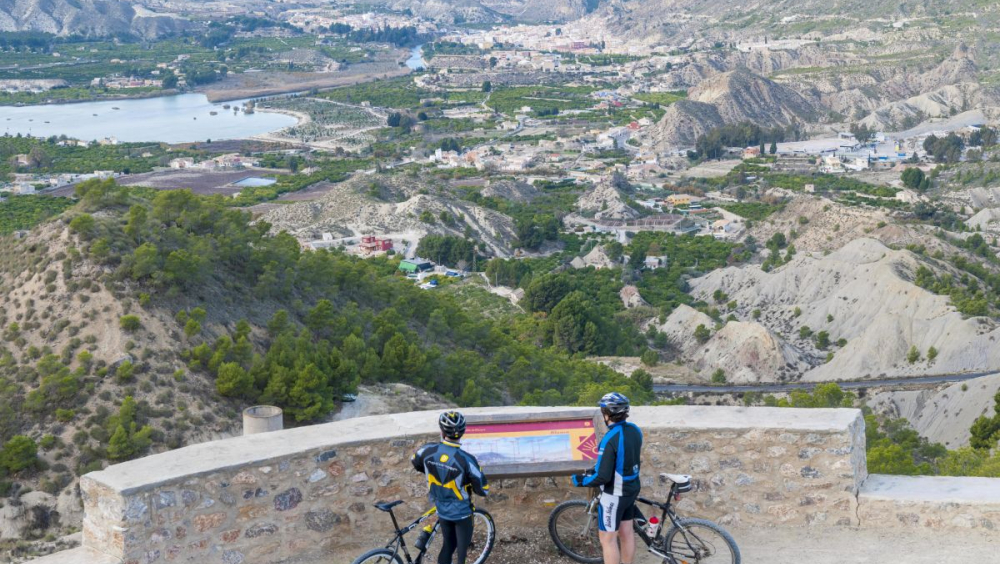Almoraña, a Culture Gate
The project consists of the creation of its own route that connects the cultural heritage of the streets of Blanca, from its plastic and sculptural works and the most modern buildings to going back to the elements of the Moorish era, carrying out the route in a theatrical way to further enhance the historical component of the passage of time in the municipality.
This route must connect all the cultural elements of relevance and interest that Blanca has had over 13 centuries, in order to show in one day the most important heritage and cultural elements that Blanca offers, so we would be talking about a route that covers practically the entire municipality of Blanca.
The route must be as accessible as possible, within the conditions permitted by the streets and elements of Blanca, in order to be a totally inclusive route; It must be properly marked in order to make it as easy as possible to do it, even without specific information about it.
It will include environmental values; since Blanca is surrounded by mountains and is a growing municipality along the banks of the Segura River, it is important to create awareness and respect for the environment.
In addition, the route must have technological elements, highlighting the creation of a navigation track as its main value, so that anyone who visits Blanca can do it on their own. Among other notable technological elements on the route, we can see spaces marked with QR codes where information can be obtained about the works and spaces in which they are located.
From the moment José Luis and his family arrived at his grandparents' town, the atmosphere was filled with a special magic. The entrance from the aridity of the route changed completely with an explosion of colors and vegetation.
The first stop was at the Alto Bayna viewpoint. At the top of the mountain, a viewpoint stood majestically, offering a panoramic view that left everyone who looked at it breathless. From this privileged point, the gaze encompassed an extensive landscape that unfolded before curious eyes. In the distance, the river meandered like a silver ribbon, drawing whimsical paths between valleys and forests. The current, slow and sinuous, reflected the sparkles of the sun that played in its waters. Under the viewpoint, the river said goodbye in a gentle embrace with a swamp, where life unfolded in an aquatic dance. From the viewpoint, every detail could be seen clearly: the birds that flew over the river, the trees that were reflected in its waters and the serenity that emanated from this natural corner. It was a place where time seemed to stop, allowing those who contemplated it to appreciate the majesty of the connection between the river and the swamp, an eternal spectacle that unfolded before their eyes.
The family walked along the main avenue of the town, following a path marked by statues, murals and heritage buildings from another era, where calm and serenity seemed to dance in the air. The facades of the buildings testified to decades of shared stories. Going down towards the river, they arrived in front of an imposing building of greenish bricks, now closed to the public. That old enclave had been the first power plant that took advantage of the flow of the river to illuminate this entire part of the region. Although its turbine no longer rotated and remained silent, the building kept within its walls the essence of a time in which energy flowed directly from the waters of the river, powering not only the lamps of yesteryear, but also the life and history of community. The family observed the building with respect, imagining the bustle of those days gone by and reflecting on the importance of that landmark that, although now closed, continued to be a silent witness to the evolution of the town over time.
Following the same route of art that unfolded before their eyes, they arrived at the central square, the heart of the town, where there were still children playing while the elderly sat on benches, sharing stories of times past. The family was joining in the bustling atmosphere, feeling part of something bigger, something that went beyond their own lives. In the square was the municipality's church, and upon entering, they felt the peace that only a place with so much history could offer. The family sat on the worn wooden benches, admiring the stained glass windows that told Bible stories. José Luis imagined his grandparents attending services there, feeling a deeper connection to his roots.
The town, although small, was full of discoveries. The family ventured through the cobbled streets of the old town, exploring every corner of that area from the Moorish era and so full of cultural wealth.
Between those narrow cobblestone streets and the time-worn facades, the family walked through the old town under the majestic shadow of the mountain. The air was permeated with history, whispers of distant times that resonated among the stones. The sun filtered between Moorish arches and geometrically shaped windows, creating a play of shadows that told stories silenced by the centuries. The ochre-toned houses, with carved wooden doors and secret interior patios, offered a glimpse of the architecture that lasted from the time of Moorish culture in Murcia.
They walked through streets that once resonated with the bustle of an authentic souk and the singing of street vendors. Now, silence dominated the stage, only interrupted by the whisper of the wind between the ancient adobe walls. The doors of the houses, now almost abandoned, told the story of a coexistence of cultures that had left its mark in every corner of the old town.
The old town under the mountain was revealed to be a treasure of Murcian history, a place where time seemed to have stopped to preserve the essence of the cultures that were intertwined in that corner. At the end of their walk, the family said goodbye to the abandoned streets, but with their hearts full of the traces of the past that they had discovered. This old town, with its forgotten alleys and squares, became a silent witness of an era where cultures converged and left an indelible mark on the identity of Murcia.
The surrounding hills offered winding paths that invited exploration, and Blanca Castle dominated them. José Luis and his family ventured up the stairs leading up to the castle, discovering viewpoints that offered stunning views of the landscape his grandparents once called home. Every step they took was like a trip through time, connecting the present with the stories of the past.
As the family ascended the path that led to the abandoned castle at the top of the hill, a feeling of excitement took over them. Upon reaching the top, the panoramic view of the town unfolded before his eyes, and the old castle stood as a silent witness to the time that had passed. With the wind caressing their faces, the family found themselves immersed in a moment of deep connection with their grandparents, who had spoken enthusiastically to them about the magnificent views and stories the castle held. The majesty of the landscape resonated with shared memories and the essence of past generations, creating an intangible bond that united the present with family roots. From above, they contemplated the cobblestone streets of the town, the houses with reddish roofs and the fields that stretched as far as the eye could see. It was as if the grandparents were present, sharing the same horizon and transmitting a legacy of love for the land and the stories that wove it. In that moment, the abandoned castle became a meeting point between the past and the present, between the family and the generations that preceded them, leaving an indelible mark of connection and continuity.
Following a path that started from the very base of the castle, the family reached the highest point of the municipality, where an imposing statue of a white virgin stood as guardian of the land. From this place, the view encompassed a landscape that seemed to breathe the history of the town. Under this mountain, the town unfolded in a symphony of cobblestone streets and orange roofs that merged with the land itself. The swamp, a serene mirror, reflected the sunlight as a testament to the vitality that has always flowed in this little paradise. Following the gaze, the crop fields spread out in geometric patterns, evoking the ingenious agricultural systems of the Moorish era that had left an indelible mark on the land. Crops billowed in the wind, living whispers of a deep connection with nature that persisted through the centuries.
The family's eyes scanned further, capturing the magnificence of the surrounding mountains that embraced the town like silent guardians. Each ridge and valley seemed to tell stories of times past, where the community had learned to live in harmony with the land. From this heavenly vantage point, the family felt enveloped by the richness of history that emanated from every visible corner.
At that moment, the connection between the past and the present finished materializing. The family, as they contemplated the immensity of the landscape, experienced a deep connection with the generations who had walked those lands, tilled the fields and built the fabric of life that persisted in that present moment. From the mountain, the white virgin seemed to watch over the continuity of that eternal connection, as a reminder that, although time moves forward, the essence of the land and the inheritance of those who have loved it endure in the hearts of the people and in the gaze of those who contemplate it from the highest.
Descending the mountain, the family carried with them the magic and connection they had experienced at the summit. As they returned to the town, they decided to explore the streets with a new sense of appreciation for the richness of its history. The avenue that led to the Town Hall Square came to life with the evening light, and the old buildings seemed to whisper stories still resonant in their walls. Without losing the essence of their experience, the family smoothly integrated into the modern world of the town, directing their steps towards the Lavadero de las Excanales.
The family found themselves in front of an old laundry converted into a monument that paid tribute to the brave washerwomen of times past. Located on the river, next to a ditch that still carried fresh water, the place exuded nostalgia for times when the bustle of the washerwomen was the soundtrack of the river. The stone structure, witness to countless stories, now stood as a tribute to those women who, with skill and dedication, wove the daily life of the community. The family soaked in the atmosphere of respect and gratitude, imagining the days when laughter and chatter filled the air as the washerwomen worked by the river.
In that special corner of the river, the irrigation ditch continued to flow, and people enjoyed a refreshing swim in the summer months. The ancient tradition of washing clothes on the banks of the river was intertwined with the modernity of a place where laughter and swimming created new memories. The family, by joining the scene, experienced the magical duality of living history and continuous evolution, where the old laundry room, converted into an emotional monument, remained a place where time seemed to stop, allowing generations to come together in the appreciation of the traditions and simple joys that life on the banks of the river offered.
The family began a serene tour of the river walk that stretched along the river, flanked by an imposing modern concrete wall that stood as a silent guardian against possible floods. As they walked, the murmur of the river and the cool shade of the trees created a harmonious atmosphere. This walk, a perfect balance between nature and modern engineering, offered them a unique perspective of the environment. Upon arriving at the municipal park, with a contemporary style, they found an urban oasis that combined the elegance of modern design with the serenity of nature. Benches with clean lines, manicured green areas and a contemporary mural evoking the beauty of the ancient park gave shape to a welcoming space. The family, by immersing themselves in this park that fused the contemporary with the essence of the natural environment, experienced the harmony between the evolution of the infrastructure and the preservation of the environment, a testimony of how progress and nature can coexist in perfect symbiosis.
The interaction with the townspeople further strengthened José Luis's connection to his roots. They talked with locals who shared local anecdotes and legends, and as the time to return home approached, José Luis carried with him not only the experience of having explored the special places in his grandparents' town, but also a renewed sense of identity and belonging. The town, once just a place in the stories of others, had become a vital chapter in his own story.
On his return trip, José Luis reflected on how exploring those special places had woven a tapestry of memories that were now part of his own narrative. His grandparents' town had become a beacon of connection with family roots, reminding him of the importance of keeping the flame of family history alive in the present and for future generations.
The creation of a cultural route that encompasses the rich narrative of the town described in the previous story would be a crucial initiative to enrich the tourist experience and strengthen community ties. This route would not only become a fascinating journey through the history of the place, but would also function as a powerful instrument for the preservation and promotion of cultural heritage.
Almoraña is the name that the notary of Blanca in 1919, Rafael López de Haro, coined to refer to the old town of Moorish origin from the 8th century to the 17th century, a vital testimony of the culture that created it and developed its lives in Blanca. throughout those centuries to, later and after the expulsion of the Moors from the Ricote Valley, remain as habitable spaces for the rest of the citizens and new visitors.
Almoraña is the word that gives rise to this project, since it is the name that was given in the 20th century to what is a door between cultures that would span 12 centuries, 13 if we count the current one.
In this way, a cultural route based on the story that accompanies this proposal would stand as a bridge between the past and the present, allowing visitors to immerse themselves in the evolution of the town. From the vestiges of Moorish culture to modern structures such as the contemporary park, each point of interest would tell a unique story. This journey through time would educate visitors about the town's resilience and ability to adapt to challenges and changes over the centuries.
. This journey through time would not only enrich the visitor experience, but would also strengthen the connection between generations and contribute to the continued flourishing of the town, all through this gateway of cultures.
